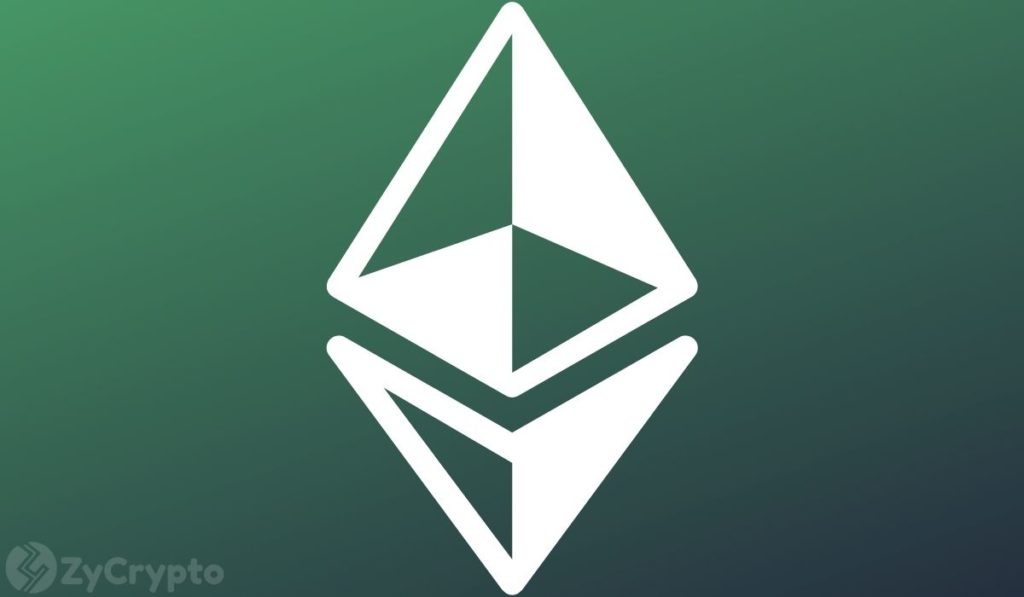2019-2-21 01:00 |
What Is Ethereum Classic?
Ethereum Classic is the original Ethereum blockchain and allows for the implementation of decentralized applications and smart contracts. The project was born out of an unwavering belief in core principles. It symbolizes the importance of a cryptocurrency being fungible and its blockchain immutable.
The Ethereum and Ethereum Classic blockchains were identical all the way up to block 1920000. But then the infamous DAO changed a blockchain and cryptocurrency forever. In this guide, we’ll cover what you need to know including:
The Hard Fork How Does Ethereum Classic Work? History Ethereum Classic Team Coin Supply and Sustainability Future Projects and Roadmap Competition Trading History Where to Buy ETC Where to Store ETC Final Thoughts Additional Resources The Hard ForkA smart contract, known as the DAO (Decentralized Autonomous Organization), was created on the Ethereum platform. The DAO was essentially a venture capital fund where investors would vote on how to allocate capital. The fund was so popular that it attracted roughly 14 percent of all Ether in existence at the time, raising 150 million dollars.
The advantage and disadvantage of a smart contract is its autonomous execution. In this case, the smart contract had a design flaw that allowed someone to steal over 3.6 million Ether from The DAO. Vitalik Buterin, creator of Ethereum, and the majority of the community wanted to perform a hard fork that would roll the blockchain back to block 1920000, before the hack, so that funds could be returned. You can read more about the controversy and the decision to hard fork Ethereum here.
After the hard fork to return people’s funds, the original Ethereum blockchain remained and is now known as Ethereum Classic or ETC. The community that continued to mine and support the original blockchain believe there should be no outside influence on what was supposed to be an immutable blockchain. Ethereum Classic has since blazed its own trail in the cryptocurrency world. In the long run, the Ethereum Classic community hopes there is value in taking the principled approach that code is law.
How Does Ethereum Classic Work?The foremost thing to know about Ethereum Classic is smart contracts. Nick Szabo invented smart contracts in 1994. However, at the time, there was no decentralized platform that could securely store the smart contracts. The blockchain provided the perfect platform. Smart contracts are built on top of the Ethereum Classic blockchain and automatically enforce the rules of an agreement. Smart contracts could one day eliminate countless intermediary services in banking, file storage, insurance, identity and reputation services, etc.
Ethereum Classic’s Turing-complete Sputnik Virtual Machine executes the smart contracts. A Turing complete machine can simulate a Turing Machine. The hypothetical machine by Alan Turing is the manipulation of a string of 1’s and 0’s to simulate any computer algorithm. It’s never been proven that a computer can actually do more than a Turing machine and thus the Sputnik Virtual Machine can run any computer program coded onto it. The idea of Ethereum Classic is to not simply decentralize currency, but make a decentralized world computer.
ETC nodes have an incentive to run the virtual machine financially. The nodes receive ETC fees for processing the transactions related to the contracts. The smart contracts are able to pay out to people in Ether classic.
Emerald Software Developer Kit (SDK)Development unique to Ethereum Classic produced the Emerald Software Developer Kit, a toolkit to build dapps. The SDK contains other components for developers such as UI, libraries, and build tools. As Ethereum Classic is a platform, the ultimate goal is for as many developers as possible to be building on top of the blockchain. ETC aims to focus on the internet of things, often referred to as IoT. In an interview, ETC developer Igor Artamonov said, “Smart contracts on [the] blockchain are ideally suited for simple agreements between machines operating on [a] distributed network, a machine-to-machine protocol, and IoT is [the] most obvious application to this.”
GethGeth, using the Go programming language, provides a “multipurpose command line tool that runs a full Ethereum Classic node.” Geth contains over 40 percent new code since the hard fork from Ethereum, demonstrating active development by the ETC team. The program allows you to mine ETC, transfer funds between wallets, create smart contracts and manage accounts.
HistoryEthereum Classic continued the original blockchain and split from Ethereum in July 2016. It was predicted that the original chain would simply disappear after the fork but mining and trading continued. Eventually, Poloniex listed ETC and the price reached one-third of ETH’s.
After bitter attacks in the various Ethereum subreddits, ETC made a “Declaration of Independence” stating, “we believe in a decentralized, censorship-resistant, permission-less blockchain. We believe in the original vision of Ethereum as a world computer that cannot be shut down, running irreversible smart contracts.”
From their Declaration of Independence’s core principles:
“Code is law; there shall be no changes to the Ethereum Classic code that violate the properties of immutability, fungibility, or sanctity of the ledger; transactions or ledger history cannot for any reason be reversed or modified.”
Clearly, these principles did not align with Ethereum and thus ETC no longer associates with the Ethereum Foundation.
Eventually, the thief dumped the ETC from the DAO hack onto the market, but surprisingly, the ETC price remained fairly stable. After all of the chaos, Ethereum Classic was eventually able to assemble a development team and set out on its own path.
Ethereum Classic TeamOriginally, the Ethereum Classic team, ETCDEV, intentionally held a lower profile. The lack of high profile leader is in line with their core philosophy of ETC being decentralized and free from powerful human influence. However, this team is no longer active.
Now, Ethereum Classic development is lead by ETC Labs and the IOHK Grothendieck team.
Previous ETCDEV Leadership Team
Coin Supply and SustainabilityETC diverges greatly from ETH when it comes to mining and coin supply. Ethereum has a built-in difficulty bomb that makes mining with proof of work harder over time. This will eventually force all miners to switch to proof of stake. ETC is pausing this difficulty bomb and intends to stick with proof of work.
On average there are 10-14 second block times with a reward of five ETC per block. As the block times are so short, transaction fees are relatively low, with an average fee of about one cent.
Ethereum Classic is inflationary through block rewards until the year 2025 at which point the coin supply will be capped at 210 million coins. Ethereum has no cap and plans to remain inflationary for the time being. ETC believes this monetary policy makes Classic a safer investment as the value of the coins will not decrease over time due to a neverending increase in supply.
Future Projects and RoadmapIn 2018, the development team released the Emerald Desktop Wallet, the first ETC trustless wallet. They’ve also removed the difficulty time bomb we mentioned earlier and started work on implementing side chains for scalability.
Over the next two years, the Ethereum Classic team is working to improve compatibility with the Ethereum chain, improve the Sputnik Virtual Machine, and implement side chains with Proof of Authority (PoA).
Ethereum Classic Roadmap (2019-2020)
CompetitionThere is no doubt that ETC runs up against some fierce competition. There is not only the obvious competitor of Ethereum but also any other smart contract provider. NEO, in particular, has made a name for itself in the smart contract space. However, the ETC “community remains less focused on other technologies coming in direct competition… and more on partnerships and complementary solutions.” It’s worth noting that when you compare the platform to some other smart contract providers, ETC certainly excels in its level of decentralization.
Trading HistoryETC consistently ranks in the top 20 for the overall market cap. After a developer conference in Hong Kong, the price spiked up to 20 dollars. The coin then saw a spike to over 30 dollars after the first phase of a new monetary policy to remove inflation.
ETC reached an all-time USD high at the height of the 2017/early-2018 bull market, topping $45.50 (~0.00316 BTC). Since then, the price has continued to drop. It currently hovers around $4.50 (~0.00115 BTC).
baseUrl = "https://widgets.cryptocompare.com/"; var scripts = document.getElementsByTagName("script"); var embedder = scripts[ scripts.length - 1 ]; var cccTheme = {"General":{"showExport":true}}; (function (){ var appName = encodeURIComponent(window.location.hostname); if(appName==""){appName="local";} var s = document.createElement("script"); s.type = "text/javascript"; s.async = true; var theUrl = baseUrl+'serve/v3/coin/chart?fsym=ETC&tsyms=EUR,CNY,GBP,USD'; s.src = theUrl + ( theUrl.indexOf("?") >= 0 ? "&" : "?") + "app=" + appName; embedder.parentNode.appendChild(s); })();
While the majority of development and interest lies with the hard fork Ethereum, it will be interesting to see the effects of centralization and inflation on the coin over the long haul.
Where to Buy ETCYou can trade for ETC with BTC and ETH on Binance and Bittrex. You can also purchase ETC directly with USD on Coinbase, the easiest-to-use option.
Outside of purchasing ETC, you can also mine. The project provides an extensive list of mining pools on their website.
Where to Store ETCYou have plenty of storage options for your ETC tokens. Ideally, you should use the Ethereum Classic-provided Emerald wallet. If that’s not to your liking, there are tons of additional options that the ETC team recommends.
For a mobile wallet, Jaxx supports ETC.
However, for maximum security, you can use the Ledger Nano S hardware wallet or the Trezor.
Final ThoughtsWith ETC, you know you are investing in a commitment to an immutable blockchain. Their team hopes, in the long run, there is value in sticking to your principles. With ETH, there is the precedent that they could hard fork again based on human influence. It is important to remember cryptocurrencies arose out of the ashes of the banking collapse. Satoshi Nakamoto originally designed decentralized blockchains to answer corruption in the financial sector. “The immutable blockchain was meant to be free from the human tendency to corrupt.” Cryptocurrency thefts have happened before and will happen again. Where do we draw the line of what requires a hard fork? ETH blurred this line while ETC has clearly drawn their land in the sand.
Editor’s Note: This article was updated by Steven Buchko on 2.20.19 to reflect the recent changes of the project.
Additional ResourcesGithub
Telegram
The post What Is Ethereum Classic (ETC)? | A Guide to the Original Ethereum Blockchain appeared first on CoinCentral.
origin »Ethereum (ETH) на Currencies.ru
|
|















